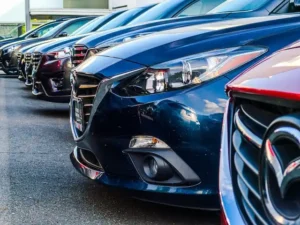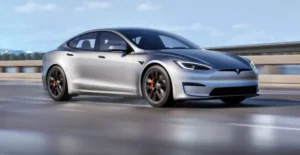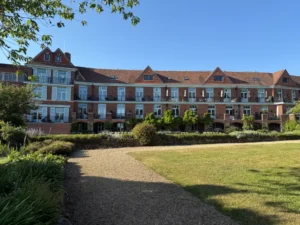All change for roof tiles
Well this was a surprise. Not only is Elon building rockets, cars, battery factories and merging Tesla with Solar City he also has time to reinvent the solar panel as a solar roof tile.
Last Friday evening just before sunset Elon Musk took to a stage and cranked up his presentation about climate change. It was a strange scene, with hundreds of people crowded into the middle of a subtly artificial suburban neighbourhood, apparently the set of Desperate Housewives. It was of course broadcast on Tesla TV and like all Musk pitches an interesting and amusing presentation.

It wasn’t until about a minute into the speech that Musk casually let the crowd in on Tesla’s big secret. “The interesting thing is that the houses you see around you are all solar houses,” Musk said. “Did you notice?”
The answer, in short, was no. Like everyone else, I knew we were there to be introduced to Tesla’s Solar Roof but has little idea of what that could be.
The roof tiles of the homes he introduced look well. Like roof tiles. Musk proclaimed.
“You’ll want to call your neighbours over and say ‘check out the sweet roof.’ It’s not a phrase you hear often.”
The roof tiles are actually made of textured glass. From most viewing angles, they look just like ordinary shingles, but they allow light to pass through from above onto a standard flat solar cell. The plan is for Panasonic to produce the solar cells and for Tesla to put together the glass tiles and everything that goes along with them. That’s all predicated on shareholders approving the $2.2 billion acquisition of SolarCity, the biggest U.S. rooftop installer, on Nov. 17.

Tesla says the tempered glass is “tough as steel,” and can weather a lifetime of abuse from the elements. It can also be fitted with heating elements to melt snow in colder climates. “It’s never going to wear out,” Musk said, “It’s made of quartz. It has a quasi-infinite lifetime.”
They look things of beauty and could change roofs forever. Musk claims that the tiles have to be beautiful, affordable and seamlessly integrated. They looked like they were. No real details or prices.
In a Q&A with reporters after the presentation, Musk said the tiles are comparable to competing high-efficiency solar panels. The current prototypes that Tesla engineers are working with reduce the efficiency of the underlying solar cell by just 2 percent. With further refinement, Musk said he hopes the microscopic louvers responsible for making the tiles appear opaque can be used to actually boost the efficiency of standard photovoltaic cells.
Powerwall
Attracting less attention than the tiles was Tesla’s Powerwall 2, a major upgrade of its home battery for electricity storage. When the original Powerwall was released last year the press was not that impressed. It was expensive for the amount of power it provided. Version 2 is a much different product. It packs more than twice the capacity—14 kilowatt hours versus 6.4 kilowatt hours—for less than half the price after installation. It includes a built-in Tesla-brand inverter and comes with a ten-year, infinite-cycle warranty.
Electricity storage is crucial for future uptake of solar power. Already in some solar-heavy regions, more electricity is being produced during the middle of the day than people can consume, and utility prices spike in the evening hours when the sun goes down. In the U.S., some states are abandoning payments for daytime rooftop solar, undermining huge investments that families have made in their solar systems. The only recourse is for customers to use that electricity themselves, at night.
Like previous attempts at solar shingles, the solar-plus-battery package hasn’t really caught on yet. SolarCity’s total bundled sales thus far number in just the hundreds. But an argument can be made that the products just weren’t compelling enough yet and the prices were still too high.
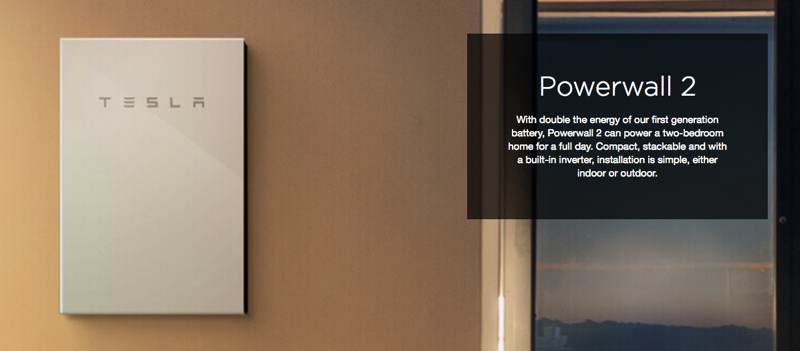
The Powerwall 2 may be the cheapest lithium ion battery for the home ever made when deliveries start in January. Tesla is selling the batteries at retail prices that are cheaper than the average manufacturing cost at most companies, according to data compiled by Bloomberg New Energy Finance. We “certainly expect it will move the market prices downwards as we saw last year with the first Powerwall,” said Yayoi Sekine, a BNEF analyst who covers battery technology.
“The future is going to overwhelmingly be solar plus battery,” Musk said. “They go together like peanut butter and jelly.”
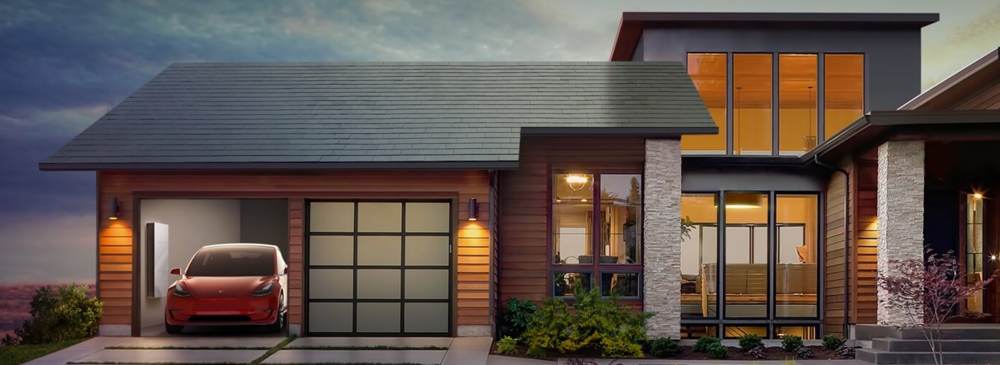
Learn more at Tesla US Energy site not UK site. Looks like it will be California first.


